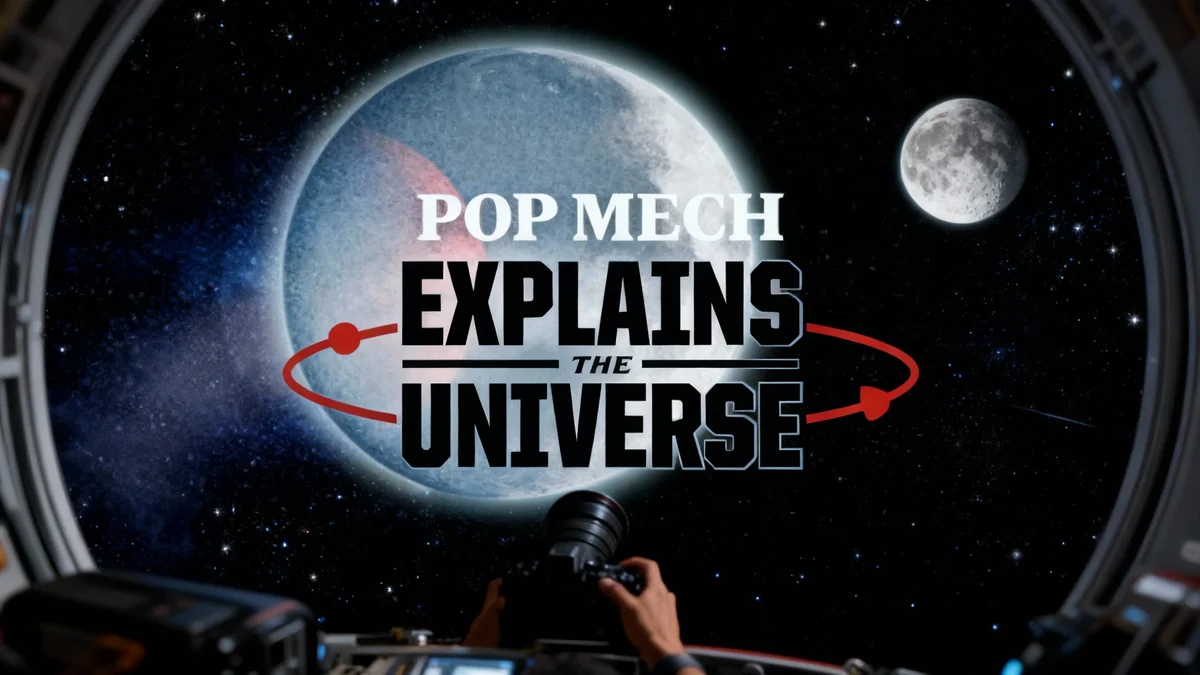The James Webb Space Telescope has detected a mysterious, reddish object that may have formed just 90 million years after the Big Bang. The object, currently nicknamed Capotauro, is challenging scientists' understanding of the early universe as they work to determine if it is the oldest galaxy ever seen, a 'failed star,' or an early black hole.
Key Takeaways
- A faint, reddish object was identified in data from the James Webb Space Telescope's CEERS Survey.
- It is estimated to have existed only 90 million years after the Big Bang, a period about which little is known.
- Scientists are exploring three main possibilities for its identity: an ancient galaxy, a brown dwarf star, or an early supermassive black hole.
- If confirmed as a galaxy, it would be 110 million years older than the current record holder.
An Unidentified Object in the Early Universe
Data from the Cosmic Evolution Early Release Science (CEERS) Survey has revealed an object that is pushing the boundaries of astronomical observation. Labeled CEERS ID U-100588, and informally named Capotauro by the international research team that found it, this faint reddish dot appears to originate from a time when the universe was in its infancy.
Its light has traveled for over 13.7 billion years to reach the Webb telescope's sensors. The object's extreme redshift, a measure of how much an object's light has been stretched by the expansion of the universe, places its origin at a mere 90 million years after the Big Bang. This timeframe is significantly earlier than when most models predict the first large structures, like galaxies, began to form.
The discovery presents a puzzle. The object's properties do not align perfectly with any single known category of celestial body, leaving researchers with several compelling but unconfirmed theories about its true nature.
What is the CEERS Survey?
The Cosmic Evolution Early Release Science (CEERS) Survey is one of the James Webb Space Telescope's key projects. It is designed to survey a patch of the sky to study galactic evolution from the very early universe to the present day. By looking deep into space, it effectively looks back in time, allowing astronomers to see galaxies as they were billions of years ago.
Possibility One: A Record-Breaking Galaxy
The most groundbreaking possibility is that Capotauro is a protogalaxy—a small, dense collection of gas and stars that represents the earliest stage of galaxy formation. If this theory is proven correct, it would shatter existing records and force a re-evaluation of cosmic timelines.
The current record for the oldest confirmed galaxy is held by JADES-GS-z14-0, which formed approximately 290 million years after the Big Bang. Capotauro would predate it by a staggering 200 million years. The existence of a galaxy so early would suggest that the processes of star and galaxy formation began much sooner and perhaps proceeded more rapidly than previously thought.
The Role of Cosmic Dust
One key piece of evidence supporting the galaxy hypothesis is Capotauro's distinct reddish color. In astronomical terms, this redness can be a sign of significant amounts of cosmic dust. Dust clouds absorb and scatter shorter, bluer wavelengths of light, allowing longer, redder wavelengths to pass through more easily. This effect makes the object appear redder than it actually is.
An early galaxy would likely be shrouded in the dust and gas from which its first stars were born. The light spectrum analysis of Capotauro indicates features consistent with a very dusty environment, lending weight to this theory.
A Universe in Its Infancy
The period 90 million years after the Big Bang is part of the "Cosmic Dawn," the era when the first stars and galaxies began to light up the universe, ending the preceding "Cosmic Dark Ages." Discoveries from this period are crucial for understanding how the universe evolved into what we see today.
Possibility Two: A Failed Star or Rogue Planet
An alternative explanation is that Capotauro is not a massive galaxy but a much smaller, closer object: a brown dwarf. Brown dwarfs are often called "failed stars" because they have more mass than a giant planet but not enough to ignite the nuclear fusion that powers stars like our sun.
Because they do not shine brightly, brown dwarfs are incredibly faint and difficult to detect, especially at great distances. They emit most of their energy as heat left over from their formation. The research team analyzed Capotauro's light spectrum for signs of molecular absorption, a key feature of the cool atmospheres of brown dwarfs.
The analysis revealed a prominent break in the spectrum, indicating that certain wavelengths of light are being heavily absorbed by molecules within the object. While this is consistent with a brown dwarf, it does not rule out other possibilities, such as a free-floating exoplanet—a planet that roams the cosmos without orbiting a star.
"Our analysis indicates that Capotauro’s properties could be consistent with it being a very cold brown dwarf or a free-floating exoplanet with a record-breaking combination of low temperature and large distance," the researchers noted in a study posted to the preprint server arXiv.
Possibility Three: A Primordial Black Hole
A third, equally intriguing possibility is that Capotauro is an early supermassive black hole. Some recent Webb discoveries have identified objects known as "little red dots" (LRDs), which were initially thought to be distant galaxies. Further analysis suggests some of these may be quasars—extremely luminous galactic nuclei powered by black holes consuming vast amounts of matter.
Capotauro is even redder than a typical LRD, making it an unusual candidate. If it is a black hole, it would have formed from the direct collapse of a massive cloud of gas and dust in the early universe. Its light would not come from the black hole itself, but from the superheated accretion disk of material swirling into it.
The spectral properties of LRDs, which are similar in some ways to Capotauro's, have been hard to pin down. They often lack the strong X-ray emissions expected from active black holes, adding to the mystery.
A Compelling Target for Future Study
Ultimately, the true identity of Capotauro remains a secret. Each potential explanation—ancient galaxy, failed star, or primordial black hole—would be a remarkable discovery in its own right. The ambiguity highlights both the power of the James Webb Space Telescope and the vast unknowns of the early cosmos.
The research team emphasized that current observations are not sufficient to make a definitive conclusion. However, the unique and puzzling nature of the object makes it a high-priority target for future, more detailed observations.
As scientists stated in their paper, "While present observations cannot determine Capotauro’s nature, our analysis points to a remarkably unique object in all plausible scenarios." Further study with Webb's advanced spectroscopic instruments will be needed to unravel the light from this cosmic enigma and determine its place in the history of the universe.





